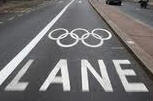|
Reading the Lanes

Conditions change. Bowling, just as they do when driving
your car. In order to get to your destination safely and most efficiently
requires your attention to conditions that exist.
The problem is, conditions, during bowling, are much less
visible. In fact, most bowlers have little idea on how to read lane
conditions. Unlike driving a car, there are no signs in place to inform
you. Well, actually if you think about it, there are signs, but most often
your competitor keeps that secret.
The Secret
There
are several secrets of bowling. The primary secret is that most bowlers
don't listen very well.
Oh, sure, they talk about where to stand, what to target,
and how they think conditions are. But, what they don't do very well is to
listen to what the lanes are telling them.
Lane dressing oil
is applied to the lanes primarily to keep bowlers from wearing grooves in the
lanes. The application of oil is applied between the foul line and several feet
beyond the foul line. Oil is applied in patterns that determine how the
bowler selects their arsenal of balls, how they align and set targets, and how
they approach and release their ball. But, from that time forward,
whatever bowlers think is on the lane simply changes.
As balls are rolled down the lanes, balls pick up some of
that oil, and the lane pattern changes due to the lessening amount of oil all
along the ball track. To make thing worse, the oil picked up by the ball
is spread down the lanes as it leaves the oil pattern, and that is called "carry
down." So, in the end analysis, oil is removed from where it was
originally, to areas that were once dry. In other words, the pattern
changes.
Bowlers try to get the ball to
roll into the strike pocket at a 6° (six degree
angle). The secret is to figure out how to roll your ball
it rolls back into the pins somewhere along that 6°
line into the pocket. |
What You Know First, you have developed,
and know your own
game. You have developed a trusted targeting system based on
what you know about the initial lane conditions.
Secondly, you understand that lane
conditions change as you and other bowlers modify
(adulterate) the oil pattern and carrydown.
Third, you watch the ball reaction
along your ball path. You post your shot to
determine if you need to change your equipment,
release, speed, loft or targeting line. (You
do this, don't you?)
If you do the first three steps,
what you need is a guide on how to interpret the
information, and make sound decisions.
How closely do you watch where your ball makes the transition
from skid, through the hook phase, into a roll?
So, how do I Read The Lanes?
Where does the ball enter the
pins?
If you were to draw a single,
straight line from your release point to the strike
pocket, you can estimate that if your ball crosses
over the arrows at two points, one inch (1") apart,
the resultant paths will be four inches (4") apart
at the pins.
This estimation is based on rough
figures, but since the arrows are 15 feet from the
foul line, and the pins are 60 feet from the foul
line, that the difference is multiplied 4 times.
Now, mathematically, since these lines are
triangulated, the difference is closer to 3.3 as
much. So, a 1" adjustment at the arrows will
change the path by 3.3" at the pins.
Basic Rules
There are four basic rules for
adjusting to lane condition changes:
1. Move in the direction of the
Error - If the ball is missing to the right, move to
the right in the stance. If the ball is
missing to the left, move to the left. Use the
same target out on the lane and open or close your
shoulders in relation to your target. |
Open your shoulders when you adjust
toward the inside of the lane, and close your
shoulders when you adjust toward the outside of the
lane.
2. Never make an adjustment based on a poor
shot.
3. Move early, and admit mistakes - More
proficient bowlers adjust quickly to changes. They
can't afford errant frames. And upon recognizing the
adjustment was wrong, they quickly admit errors.
4.
Watch more advanced bowlers. Their line may
not be the same as yours, but they should give you
clues as to how to adjust.
Hint 1 - On the Nose If, instead of entering the pin
deck at the 171/2
board and his hitting on the nose, you may want to
consider a 1 board adjustment. The pin is
roughly 43/4"
wide, and from the pocket at the 171/2
board plus 3.3" would place the ball at
the 21 board.
Hint 2 - Leaving a
Corner Pin
When the ball-side corner pin is left standing,
most often the ball needs to enter the pocket just a
bit higher.
Instead of entering the pins at the 171/2
board, the ball may be just to the outside of that
target.
a.
You may want to consider a 6" to 12" backward
adjustment with your feet.
b. Consider
releasing the ball with a bit less loft on your ball
to get it into the slide a bit earlier.
c. Consider slowing your ball down a
bit using one of the many techniques for this
change.
The opposite adjustment may be appropriate for a
non-ball-side corner pin leave.
|